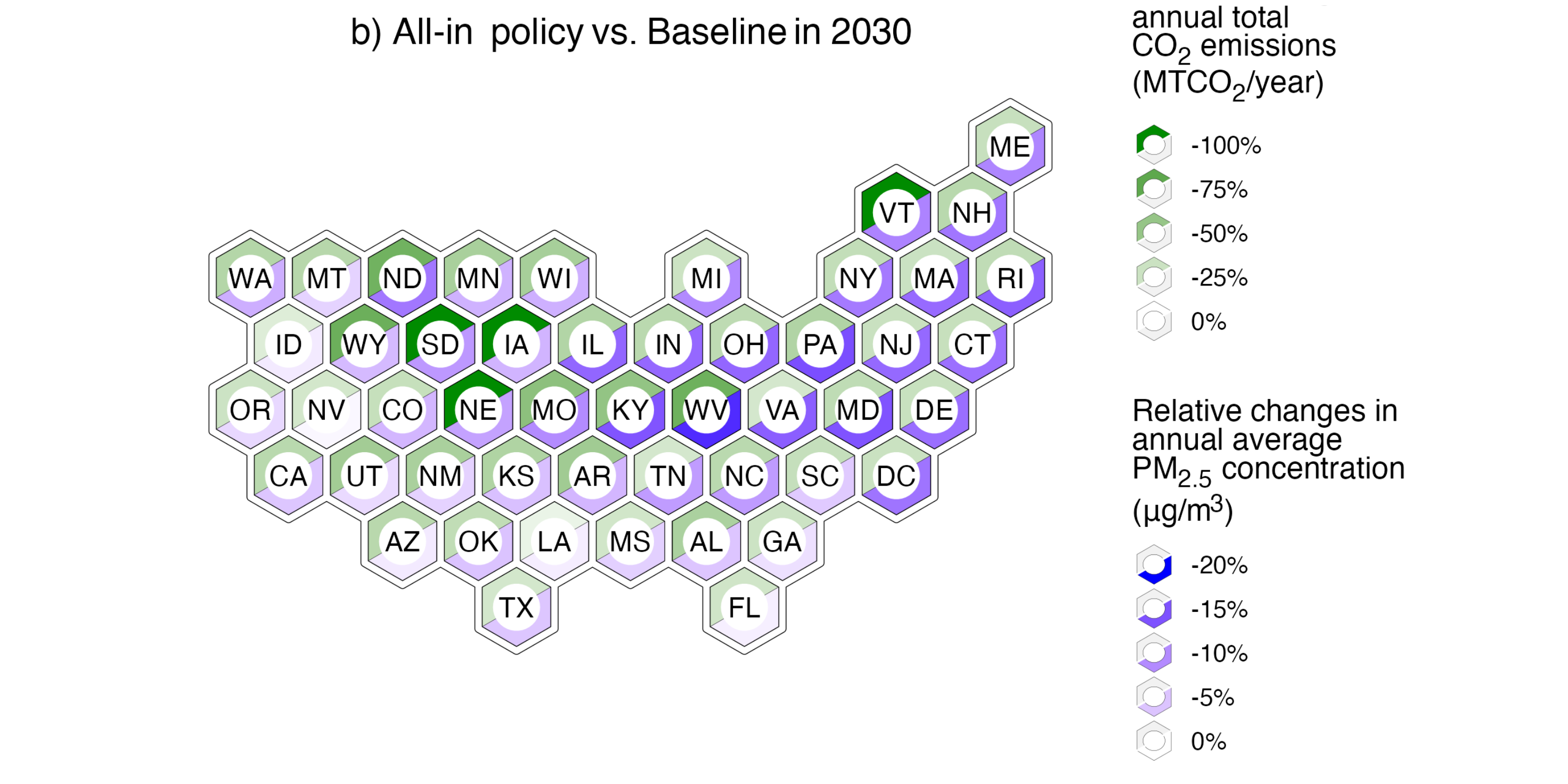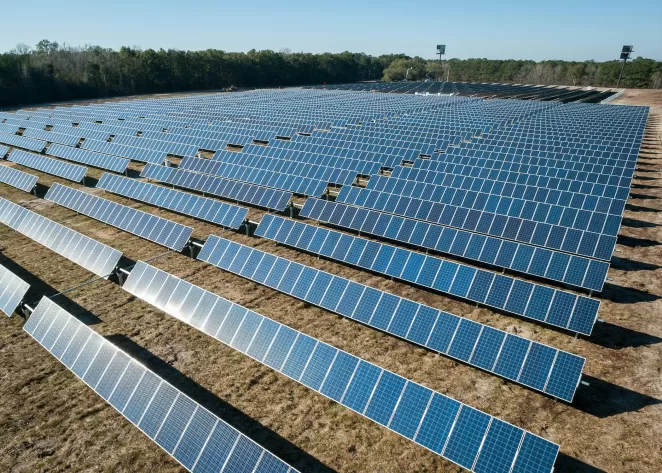All-In Climate Action for Improved U.S. Air Quality and Health Benefits
Key Takeaways:
An all-of-society approach to achieving U.S. climate goals—integrating federal policies from Congress and the Executive Branches with actions from states, cities, businesses, and communities—can realize improved air quality and health benefits across every state and in nearly every county in the United States.
Climate-smart implementation of existing policies, including the Inflation Reduction Act and non-federal actions like renewable portfolio standards (RPS) and electric vehicle (EV) sales targets, can reduce national and state-level premature deaths attributable to air pollution by nearly 3,300 annual deaths in 2030 and can have a cumulative impact of nearly 35,800 fewer deaths from 2024 to 2035 compared to no climate action.
Building on these current policies, an all-of-society approach will further reduce national and state-level premature deaths, with an estimated 5,400 fewer annual deaths in 2030 and a cumulative impact of nearly 63,600 fewer deaths from 2024 to 2035 compared to no climate action.
An all-of-society approach will result in improved air quality and health benefits across every state and nearly every county in the United States. Climate-smart implementation reduces deaths attributable to PM2.5 in 2030 by 10-15% in most states, with large reductions in the Northeast and Midwest regions: West Virginia by 18% and Maryland and Pennsylvania by 15% each.
Under an all-of-society approach, nearly every county in America will experience reductions in premature deaths related to PM2.5—more than 5% in two-thirds of counties and more than 10% in one-third of counties.
Actions such as transitioning away from coal power to renewable energy, adopting electric vehicles, and enhancing energy efficiency across all sectors can significantly decrease air pollutants, leading to substantial health co-benefits across the U.S.
Building off last year's report, “An All-In Pathway to 2030: The Beyond 50 Scenario,” our new analysis demonstrates how an expanded all-of-society climate strategy—integrating federal policies with actions from states, cities, businesses, and communities—can help the United States achieve significant air quality and health benefits, in addition to achieving U.S. climate goals.
Beyond combating climate change, the clean energy transition will also create benefits to air and water quality, human health, and ecosystems that improve the quality of life for all Americans. This report demonstrates life improvement in every state and nearly every county in the United States. For example, climate-smart implementation reduces deaths attributable to PM2.5 in 2030 by 10-15% in most states, with large reductions in the Northeast and Midwest regions: West Virginia by 18% and Maryland and Pennsylvania by 15% each.






